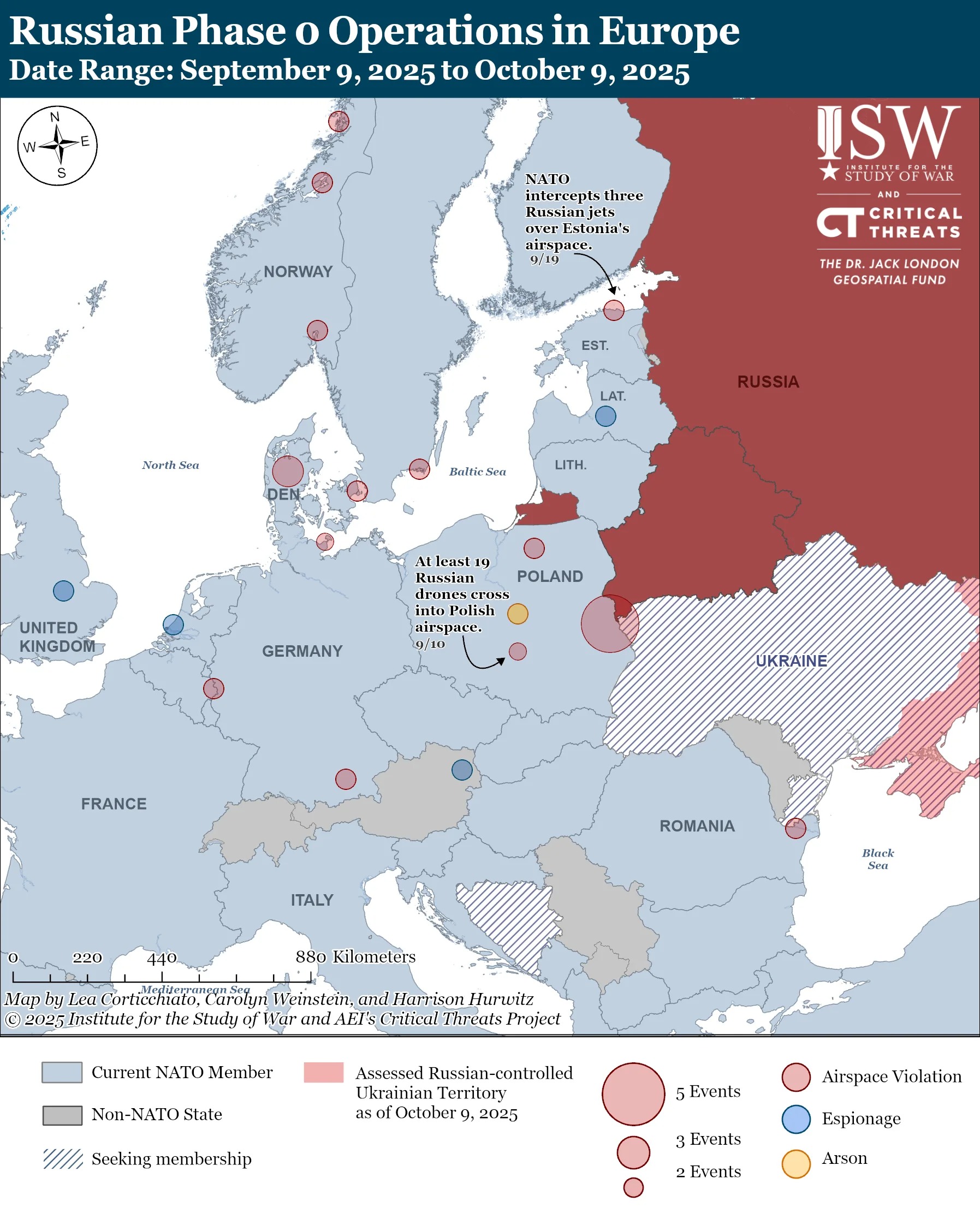The Institute for the Study of War (ISW) warns that Russia has entered what it calls “Phase 0,” a psychological and informational campaign setting the conditions for possible future war with NATO. As part of this broader strategy, Russian-linked tankers have been tied to drone incursions over Europe, while NATO allies are moving to adjust engagement rules and defense coordination in response.
ISW: Russia’s “Phase 0” seeks to prepare Europe for confrontation
The ISW reported on 9 October that Russia has increased its use of covert and overt attacks against Europe, according to the Institute for the Study of War (ISW). In its assessment published on 9 October, the think tank writes:
“Russia has been increasingly engaging in covert and overt attacks against Europe and that Russia has entered ‘Phase 0’ — the informational and psychological condition setting phase — of its campaign to prepare for a possible NATO-Russia war in the future.”
The report notes a growing pattern of hostile Russian activity across NATO territory. ISW maps more than a dozen “Phase 0” operations in the past month. These include at least 19 Russian drones entering Polish airspace on 9-10 September, and the interception of three Russian military jets by NATO over Estonia on 19 September. Other mapped incidents involve drone incursions, espionage, and arson attacks.
The European Parliament responded on 9 October by overwhelmingly passing a resolution condemning Russia’s “escalatory actions” in Polish, Estonian, Latvian, Lithuanian, and Romanian airspace. The resolution also denounced deliberate drone incursions targeting critical infrastructure in Denmark, Sweden, and Norway.
Though the resolution did not mention recent drone flights over Munich Airport, ISW notes that German authorities have attributed those incursions to Russia as well.
EU and NATO adapt to Moscow’s hybrid escalation
The European Parliament's resolution encouraged EU states to take action against airspace violations, including by shooting down threats. It backed the launch of the EU’s “drone wall” and Eastern Flank Watch programs, and urged deeper industrial cooperation with Ukraine in drone production and countermeasures.
Parliament members also advocated for sanctions against Chinese companies supplying dual-use technologies aiding Russia’s drone and missile production, and proposed further punitive actions targeting Belarus, Iran, and North Korea. The resolution stated that the scope of Russia’s sabotage and hybrid activity constitutes state-sponsored terrorism, “even if they fall below the threshold of an armed attack.”
Russia’s shadow fleet connected to drone operations over European skies
Ukrainian President Volodymyr Zelenskyy said on 9 October that Russia’s so-called “shadow fleet” — a group of more than 500 tankers — has been used to support covert drone operations targeting Europe. He claimed Russian special services were aboard the Borocay, a Russian-linked tanker seized by French authorities on 1 October after being stopped the previous day off the French coast.
According to Maritime Executive, the Borocay was one of three vessels near the site of a coordinated drone incursion that shut down Copenhagen Airport on 22 September. ISW previously reported that Russia has increasingly used civilian maritime assets as part of its broader hybrid warfare tactics.
NATO rethinks engagement policy as threats mount
The Financial Times reported on 9 October that NATO states are actively discussing more forceful responses to Russia’s hybrid attacks. Four NATO officials told the outlet that current proposals include arming reconnaissance drones, conducting exercises in remote areas near Russia’s border, and reducing restrictions on pilots’ ability to engage Russian threats.
Two officials cited by FT said the talks aim to streamline the alliance’s rules of engagement. Some NATO countries currently require pilots to visually confirm targets before opening fire, while others permit engagement based on radar data or threat trajectories.




